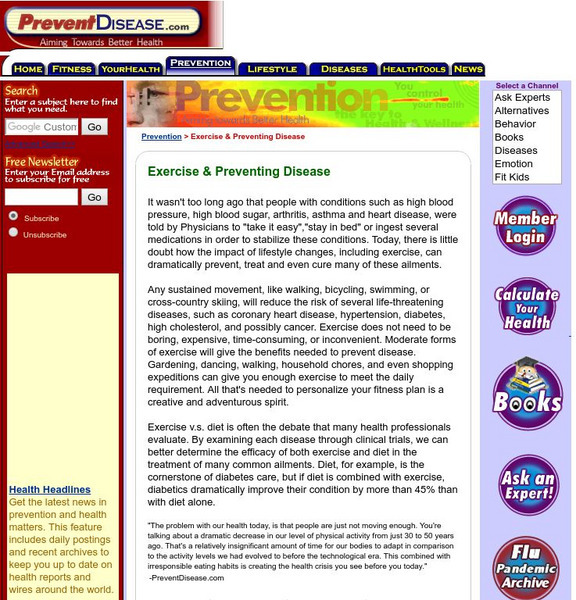Other
Prevent Disease: Exercise & Preventing Disease
This web-article discusses how exercise not only helps prevent disease, but also improves the health of those who have certain medical conditions. Learn how physical activity helps individuals battle cardiovascular and musculoskeletal...
Science Buddies
Science Buddies: A Day in the Life of Your Heart
Heart rates can be determined by the amount of physical activity your body is engaging in. The more physically active you are, the faster your heart beats. You can measure the rate your heart is beating by taking your pulse. This science...
BBC
Bbc Schools: Ks2 Bitesize: Science: Living Things: Circulation
Check Steve's cardiovascular health before he starts filming his dangerous wildlife special. Following the activity, read more about the heart, and then take a quick quiz to check for understanding.
Children's Museum
The Children's Museum of Indianapolis: Sports Science and Wellness
This unit of study contains three lessons, each with three experiences that may be taught together or individually. Each lesson will connect to science and/or math standards, along with a health standard or sports connection.
National Institutes of Health
National Library of Medicine: Your Beating Heart
In this lesson plan site, the students will learn about the circulatory system and perform an experiment where they take their pulse after various activities.
Science Museum of Minnesota
Lesson Plan: Pulse of Life
Students measure their pulse rate and explore how heart rate is affected by various activities.
CK-12 Foundation
Ck 12: Life Science: Muscles and Exercise
[Free Registration/Login may be required to access all resource tools.] Regular physical exercise is important in preventing lifestyle diseases such as cardiovascular disease, some types of cancer, type 2 diabetes, and obesity. Regular...
Texas Heart Institute
Texas Heart Institute: Heart Information Center: Pacemaker
Article on arrhythmias with information about the heart's pacemaker.
TeachEngineering
Teach Engineering: What's With All the Pressure?
Students learn how to take blood pressure by observing a teacher demonstration and then practicing on fellow classmates in small groups. Once the hands-on component of this activity is completed, the class brainstorms and discusses how...







